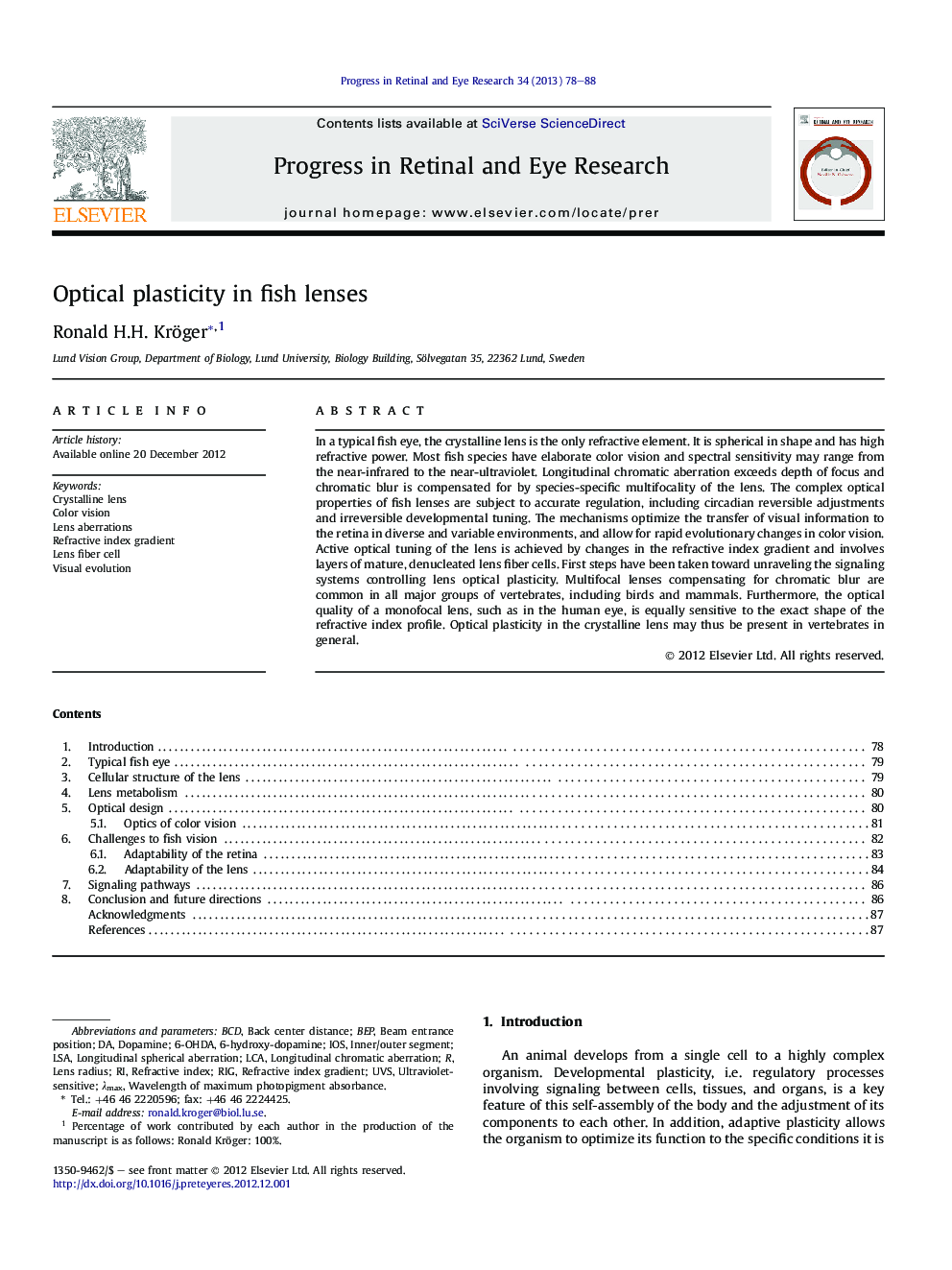| Article ID | Journal | Published Year | Pages | File Type |
|---|---|---|---|---|
| 6202756 | Progress in Retinal and Eye Research | 2013 | 11 Pages |
In a typical fish eye, the crystalline lens is the only refractive element. It is spherical in shape and has high refractive power. Most fish species have elaborate color vision and spectral sensitivity may range from the near-infrared to the near-ultraviolet. Longitudinal chromatic aberration exceeds depth of focus and chromatic blur is compensated for by species-specific multifocality of the lens. The complex optical properties of fish lenses are subject to accurate regulation, including circadian reversible adjustments and irreversible developmental tuning. The mechanisms optimize the transfer of visual information to the retina in diverse and variable environments, and allow for rapid evolutionary changes in color vision. Active optical tuning of the lens is achieved by changes in the refractive index gradient and involves layers of mature, denucleated lens fiber cells. First steps have been taken toward unraveling the signaling systems controlling lens optical plasticity. Multifocal lenses compensating for chromatic blur are common in all major groups of vertebrates, including birds and mammals. Furthermore, the optical quality of a monofocal lens, such as in the human eye, is equally sensitive to the exact shape of the refractive index profile. Optical plasticity in the crystalline lens may thus be present in vertebrates in general.
⺠Multifocal crystalline lenses compensate for chromatic defocus. ⺠Different types of optical plasticity optimize information transfer to the retina. ⺠Denucleated lens fiber cells participate in the regulation. ⺠Active optical tuning of the lens explains rapid evolution of color vision. ⺠Similar mechanisms may be present in vertebrates in general.
